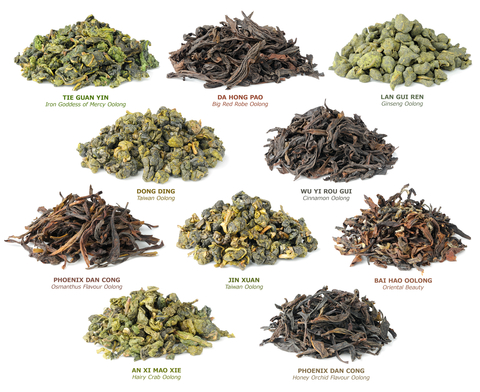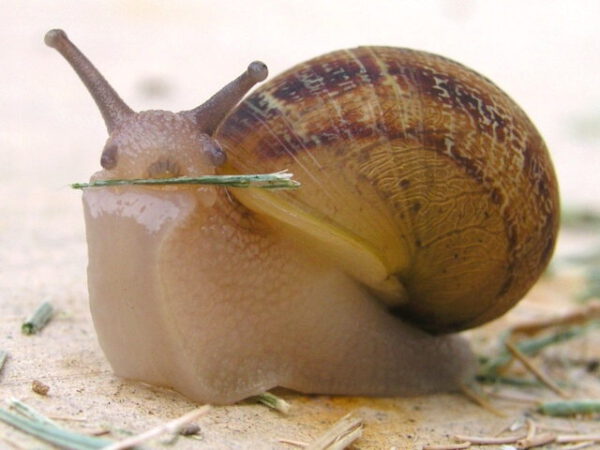Everyone knows about black tea and green tea, and even herbal and jasmine tea, but then things get fuzzy. There is a diverse group of tea that encompasses the oxidation spectrum between black and green, known as oolong tea (simplified Chinese: 乌龙; traditional Chinese: 烏龍; pinyin: wūlóng). Oolong tea has become popular in recent years, and with good reason – it tastes awesome! Some types of oolong tea command high prices and are considered some of the premier teas of China.
There are many varieties of oolong tea with many different tastes, and even different ways of processing the tea leaves. In general, oolong is produced via withering the leaves under the sun and then oxidation (called “fermentation” if you speak tea) in a controlled environment. The different oxidation levels help give the oolong teas the different flavors. Most oolongs are around the 40-50% oxidation range, but the full range is greater. Lighter teas such as Baozhong are between the 5-20% range, while darker teas such as Bai Hao (Oriental Beauty) are around 70%. The leaves are then either curled (rolled into long curly leaves) or wrap-curled/twisted into tailed beads. Curling is the more traditional technique. Oolong preparation is considered an art form, and tea masters develop their curling steps and hand down the practices. The art extends into the Gongfu tea presentations and ceremonies which probably originated in the same region.
Due to the assorted cultivation and production methods, oolong tea has a variety of flavors and aromas, the lighter brews are more fruity, flowery, and/or sweet, while the darker versions are more roasted and woody. High quality oolong can be steeped multiple times, with some people preferring oolong that has been rebrewed three or four times.
Oolong tea from the Wuyi Mountains are well known worldwide. Taiwan is also a source of many varieties of oolong tea. There is limited production in India, Vietnam, and Hawaii.
Oolong means Black Dragon, and there are several theories as to what that means. Wuyi theory holds that oolong is named after the region of the Wuyi Mountains where it originally was produced. Tribute tea theory says it originated from Dragon-Phoenix Tea Cake tribute tea, named because the loose tea leaves resembled black dragons. Anxi theory is that oolong was first made from the Anxi tea plant that was discovered by a man named Sulong, Wulong or Wuliang. Another version of that theory involves Wuliang being distracted while preparing green tea and the leaves became partially oxidized.
Due to the diverse amount of oolong tea, a simple summary is not enough, you will need to sample many varieties of oolong to become experienced in this popular and motley category.


